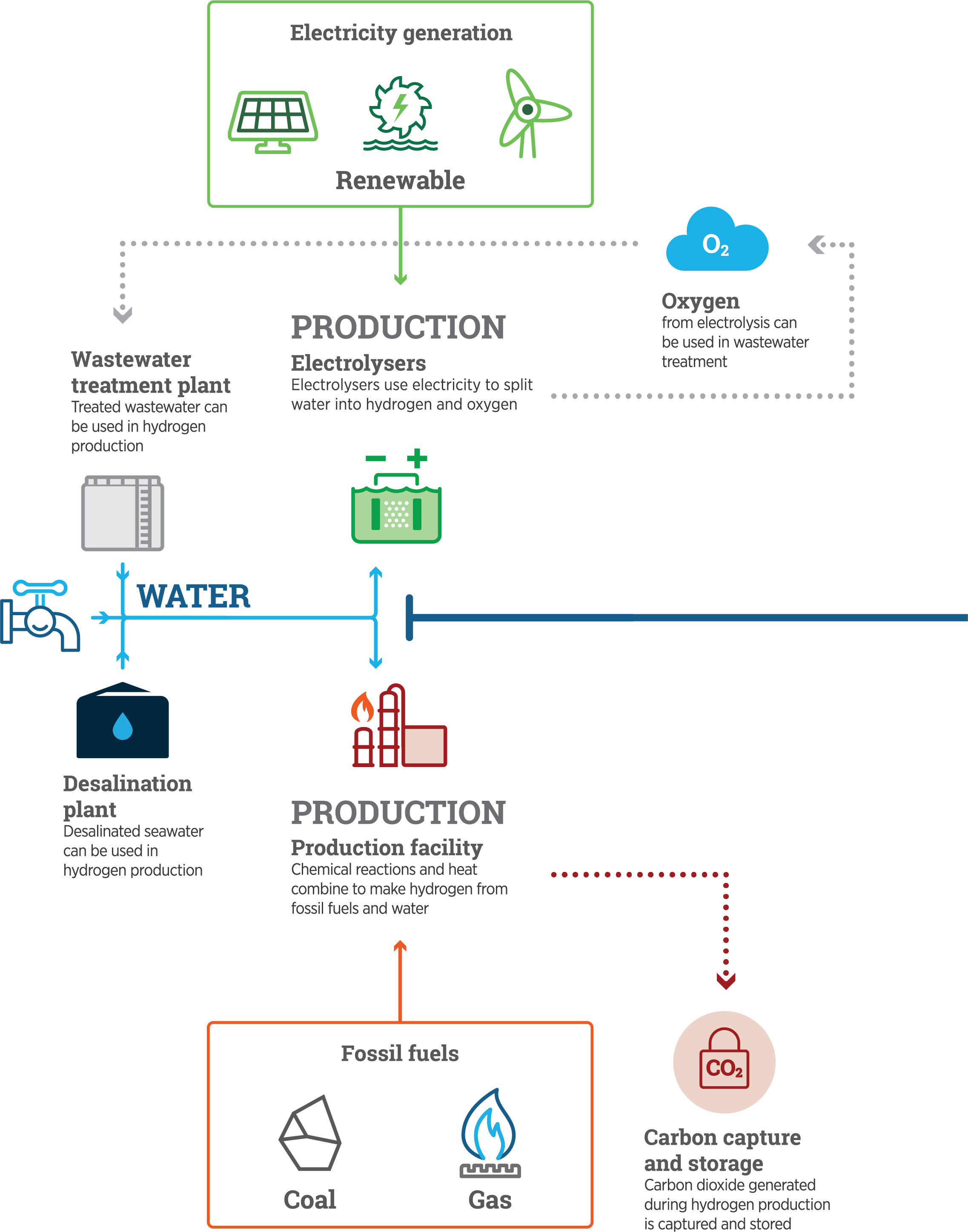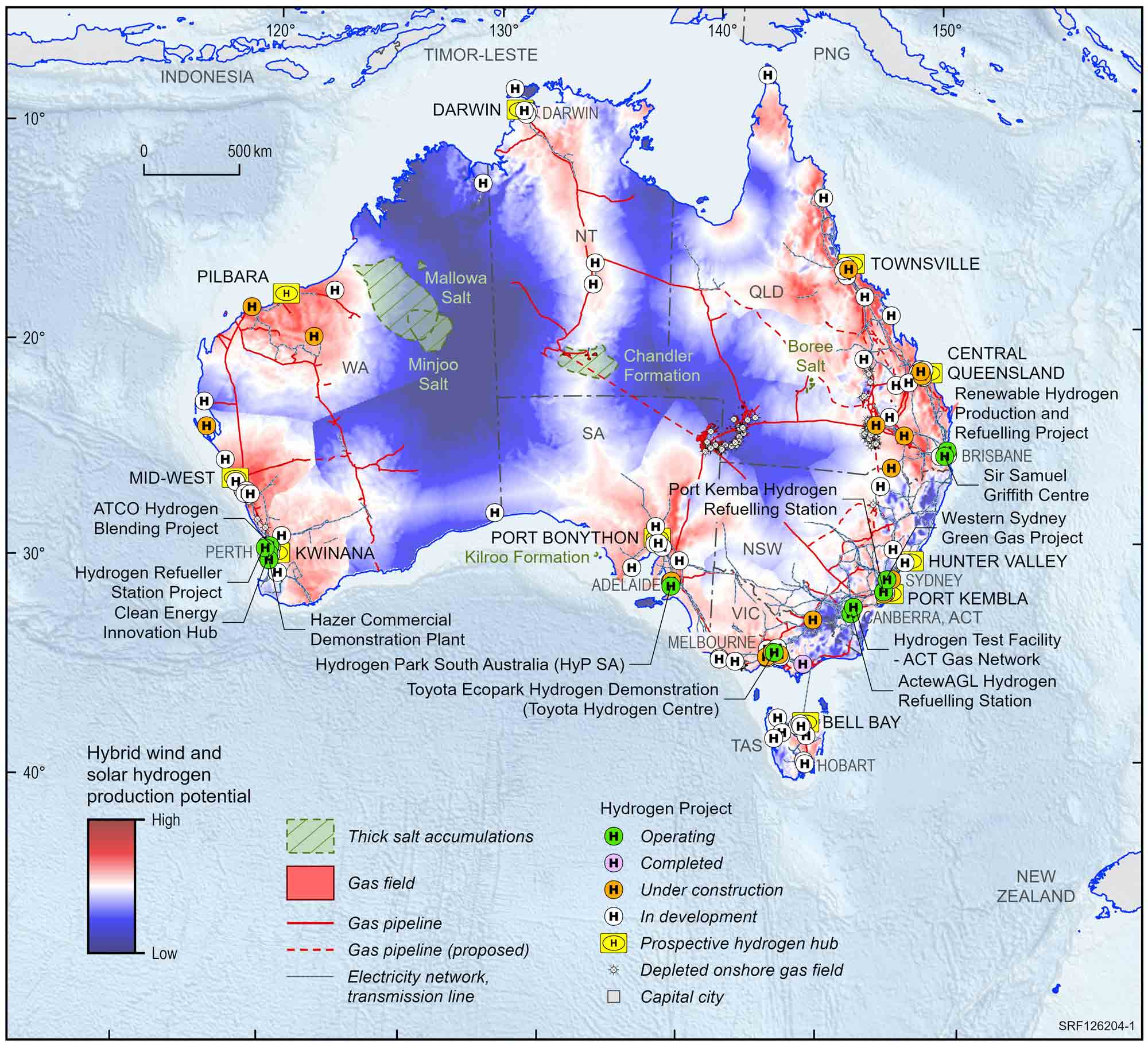What is hydrogen?
Page last updated:24 October 2023
Hydrogen production
While hydrogen is abundant in the universe, it is not freely available as a gas on Earth. The primary methods currently available for producing hydrogen with low carbon emissions are:
- using renewable energy sources such as solar and wind power to provide the electricity required to split hydrogen from water through a process known as electrolysis;
- using a thermochemical reaction from a fossil fuel feedstock such as coal (coal gasification) or natural gas (steam methane reformation) and water. The CO2 emissions created as a byproduct are captured and stored in deep geological formations.
Hydrogen production overview from COAG Australia’s National Hydrogen Strategy, Commonwealth of Australia 2019, page 39
Demonstration and implementation
Hydrogen is already being used for electricity production and in vehicles in various parts of the world. While large scale implementation of hydrogen production is not yet available in Australia, there are over 100 pilot, demonstration and small-scale projects in various stages of operation, as shown in the map below. More details on each of the projects in the map can be found at AusH2, HyResource or in the Australian Hydrogen Projects Dataset (September 2023). A number of jurisdictions in Australia are also looking at ways to add up to 10 per cent of hydrogen into the municipal gas distribution network.
This map identifies current hydrogen projects (as of September 2023) and areas of high suitability for hybrid wind and solar hydrogen production in Australia, which were identified using the Hydrogen Economic Fairways Tool (ga.gov.au/heft)
In 2019, Geoscience Australia was engaged by the Department of Industry, Science, Energy and Resources to complete a national-scale spatial analysis of Australia’s hydrogen production potential, to aid in the development of Australia’s National Hydrogen Strategy (released November 2019).
The study concluded that:
- Australia has vast physical resources that could support a large-scale hydrogen industry.
- Both large-scale renewable and CCS hydrogen can be supported.
- Coastal areas are favourable for hydrogen production from electrolysis due to an unlimited supply of desalinated water and existing infrastructure (e.g. electricity, ports).
More details on the findings from the study are described in “Prospective hydrogen production regions of Australia” (high-resolution maps and datasets are also available).

